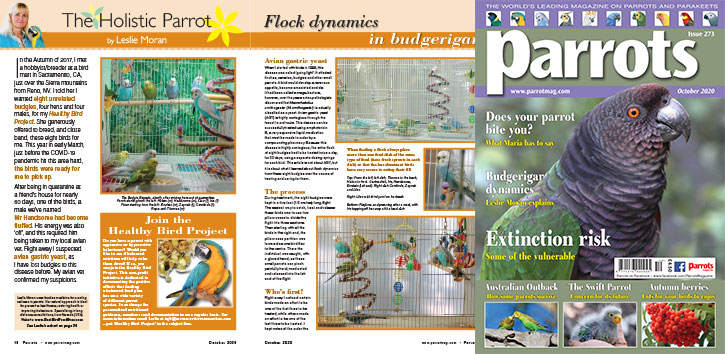
The Holistic Parrot by Leslie Moran
In the Autumn of 2017, I met a hobbyist/breeder at a bird mart in Sacramentto, CA, just over the Sierra mountains from Reno, NV. I told her I wanted eight unrelated budgies, four hens and four males, for my Healthy Bird Project. She generously offered to breed, and close band, these eight birds for me. This year in early March, just before the COVID-19 pandemic hit this area hard, the birds were ready for me to pick up.
After being in quarantine at a friend’s house for nearly 60 days, one of the birds, a male we’ve named Mr Handsome had become fluffed. His energy was also ‘off’, and this required him being taken to my local avian vet. Right away I suspected avian gastric yeast, as I have lost budgies to this disease before. My avian vet confirmed my suspicions.
When I started with birds in 1998, this disease was called ‘going light’. It affected finches, canaries, budgies and other small parrots. A bird would develop a ravenous appetite, become emaciated and die. It had been called a mega-bacteria, however, over the years avian pathologists discovered that Macrorhabdus ornithogaster (M. ornithogaster) is actually classified as a yeast. Avian gastric yeast (AGY) is highly contagious through the faecal to oral route. This disease can be successfully treated using amphotericin B, a very expensive liquid medication that must be made to order by a compounding pharmacy. Because this disease is highly contagious, the entire flock of eight budgies had to be treated twice a day, for 30 days, using a separate dosing syringe for each bird. This article is not about AGY, but it is about what I learned about flock dynamics from these eight budgies over the course of treating and caring for them.
